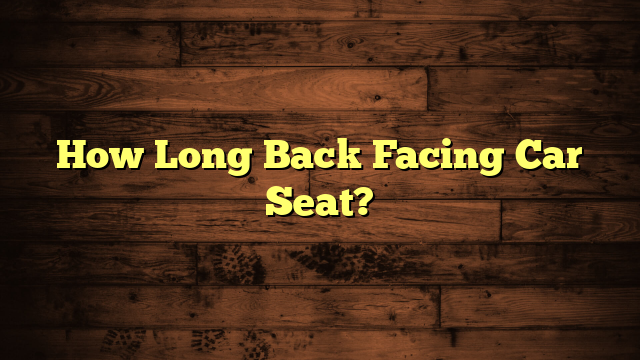What Does a Booster Seat Look Like?
When you think about a booster seat, you might picture a simple cushion, but there's much more to it than that. These seats come in various designs, from high-back models with supportive features to sleek, backless options that prioritize portability. The materials can vary widely, and the colors often appeal to children. Understanding these differences is essential for making an informed choice, especially when considering safety and comfort. So, what specific features should you really be looking for?
Key Takeaways
- High-Back Booster Seats feature a backrest for support, aligning with vehicle headrests, and are typically padded for comfort.
- Backless Booster Seats are portable and compact, designed for older children, lacking a backrest but maintaining seat elevation.
- Material Variations include padded fabric or molded plastic, with high-quality padding enhancing comfort during rides.
- Safety Features often include adjustable headrests, side wings for protection, and a sturdy base to prevent tipping.
- Color and Design vary by brand, with options available in various styles to appeal to children and parents alike.
Types of Booster Seats
When it comes to choosing a booster seat, you'll find several types designed to suit different needs and preferences. The most common types include high-back booster seats and backless booster seats. High-back boosters provide added support and align with your vehicle's headrest, making them ideal for younger children who may still need that extra support.
Backless boosters, on the other hand, are more portable and easier to move between vehicles, suitable for older kids who are ready for a change.
You'll also notice that booster seat materials vary, from padded fabric to molded plastic. Choosing a material that fits your child's comfort is important, as it can affect their willingness to use the seat.
Moreover, it's essential to be aware of booster seat regulations in your area. These rules can dictate the type of seat appropriate for your child's age and weight, ensuring their safety while traveling.
Before making a purchase, familiarize yourself with these regulations, as they may differ by state. Understanding the kinds of booster seats available will help you make an informed decision that prioritizes your child's safety and comfort on the road.
Safety Features to Consider
Choosing the right booster seat goes beyond just picking a style; safety features play an important role in protecting your child during travel. When selecting a booster seat, you should first check its safety ratings. These ratings indicate how well the seat performs in crash testing, helping you make an informed decision.
Look for booster seats that have received high marks from independent organizations, as they've undergone rigorous evaluations to guarantee your child's safety.
Next, consider the seat's design features. A good booster seat should have a sturdy base to prevent tipping and provide stability. Furthermore, adjustable headrests and side wings can offer extra protection during a crash. Some models even come with built-in safety features, such as harnesses that secure your child properly.
Don't overlook the ease of installation. A booster seat that's easy to install correctly means you're more likely to use it properly every time.
Finally, always follow the manufacturer's instructions for both installation and usage, as proper fit is essential for maximizing safety. By focusing on these important safety features, you can make certain that your child travels securely and comfortably.
Design and Aesthetics
Many parents find that the design and aesthetics of a booster seat can be just as important as its safety features. After all, you want a seat that not only protects your child but also fits well with your vehicle's interior and your personal style.
When choosing a booster seat, consider the color choices available. Many brands offer vibrant hues, playful patterns, or neutral tones to match your aesthetic preferences. You might lean towards a bold red or a calming blue, depending on your taste.
Material options also play a significant role in the overall look and feel of the booster seat. Seats made from durable fabrics can withstand spills and messes while still looking good. Some manufacturers even provide removable covers for easy cleaning, allowing you to maintain that fresh appearance.
Additionally, the design of the seat itself—whether it's sleek and modern or plush and cozy—can influence your decision.
Size and Weight Variations
Booster seats come in various sizes and weights, making it important to find one that fits your child's needs and your vehicle's space. Each booster seat has specific height requirements and weight limits that you need to take into account. For instance, some booster seats are designed for younger children who are lighter and shorter, while others accommodate older, heavier kids.
To help you understand the differences, here's a quick reference table:
| Booster Seat Type | Height Requirement (inches) | Weight Limit (lbs) |
|---|---|---|
| High Back | 38-57 | 30-100 |
| Backless | 40-57 | 40-100 |
| Combination Seat | 30-57 | 20-120 |
| All-in-One | 22-57 | 4-120 |
| Travel Booster | 38-54 | 30-100 |
Choosing the right booster seat involves checking these specifications to guarantee safety and comfort. Always refer to the manufacturer's guidelines for the most accurate information, making sure your child's booster seat is suitable for their size and weight.
Installation Methods
When it comes to booster seats, understanding the installation methods is key to ensuring your child's safety.
You'll want to familiarize yourself with the different types of booster seats available, as well as how to use the seat belt properly with each one.
Types of Booster Seats
Choosing the right installation method for booster seats can greatly impact your child's safety during travel. There are primarily two types of booster seats: high-back and backless.
High-back booster seats are designed for children who are still within the booster seat age range and provide additional head and neck support, which can be vital in a collision. These seats often incorporate various booster seat materials, such as foam and reinforced plastic, to enhance safety and comfort.
Backless booster seats are more portable and easier to install, making them a convenient choice for older kids who've outgrown high-back options. However, they don't offer the same level of protection in side-impact crashes, so it's important to verify your vehicle has headrests.
When selecting a booster seat, consider your child's size, weight, and age to make sure they're using the appropriate seat for their developmental stage.
Both types can be secured using your car's seat belt, but always follow the manufacturer's guidelines for installation to maximize safety. Remember, the best booster seat is one that fits your child properly and is installed correctly for every trip.
Proper Seat Belt Use
For ideal safety, guaranteeing proper seat belt use with a booster seat is essential. When your child is secured in a booster seat, it's vital that the seat belt fits correctly. The lap belt should sit low across their hips, not their stomach, while the shoulder belt should cross the middle of their chest and shoulder. This positioning helps prevent injuries during sudden stops or accidents.
To achieve a proper fit, adjust the booster seat so your child is seated comfortably and upright. The seat needs to be installed securely in your vehicle, with no more than an inch of movement at the base.
Use your vehicle's seat belt system as a guide; some booster seats come with guidelines to guarantee correct seat positioning.
Safety Guidelines to Follow
Making sure your booster seat is installed correctly is just as important as using the seat belt properly. To meet safety regulations, always follow the manufacturer's instructions for installation. You'll want to check that the booster seat is securely fastened to your vehicle's seat and that it doesn't move more than an inch when pulled at the base.
Next, be mindful of the age requirements for booster seat use. Generally, children should shift to a booster seat once they outgrow their forward-facing car seat, typically around age 4, but this can vary based on height and weight. Verify that your child is at least 40 pounds, as this weight is essential for the booster seat to function effectively.
When using a booster seat, position the vehicle's seat belt properly across your child's body. The lap belt should lie flat across the thighs, while the shoulder belt should rest snugly across the shoulder and chest—not the neck or face.
Comfort and Padding Options
When it comes to booster seats, comfort and padding options can make a significant difference in your child's riding experience. Choosing the right padding materials is essential for ensuring that your little one remains comfortable during car rides.
Look for booster seats that feature high-quality foam or gel padding, as these materials often provide better support and cushioning, enhancing overall comfort levels.
Additionally, consider the thickness of the padding. Thicker padding can help absorb bumps in the road, making every journey smoother. However, it's also important to strike a balance; too much padding might affect the seat's fit within your vehicle.
Many booster seats offer removable covers, allowing you to clean and maintain the seat easily while ensuring your child stays comfortable.
Lastly, don't overlook the design of the seat itself. Ergonomically shaped booster seats can provide better support for your child's back, promoting a more relaxed sitting position.
Popular Brands and Models
Steering through the world of booster seats can be overwhelming, especially with the myriad of brands and models available today. When you're looking for the right fit for your child, it helps to focus on the top brands that consistently receive high marks for safety and usability.
Brands like Graco, Britax, and Chicco dominate the market, each offering unique features tailored to various needs.
Model comparisons can further simplify your decision-making process. For example, Graco's TurboBooster is known for its adjustable headrest and easy installation, making it a popular choice among parents. On the other hand, Britax's Skyline booster seat boasts a high back for added support and side impact protection, ideal for families prioritizing safety. Chicco's KidFit model stands out with its dual-layer cushioning, ensuring your child stays comfortable during long rides.
As you explore these options, consider your child's age, weight, and height, along with the seat's installation requirements.
Frequently Asked Questions
At What Age Should My Child Transition to a Booster Seat?
You should consider shifting your child to a booster seat around age 4, as it enhances safety. Always follow safety guidelines to guarantee maximum protection, and enjoy the benefits of increased comfort and security during car rides.
Are Booster Seats Suitable for All Vehicle Types?
Booster seats boast brilliant designs, but not all vehicles are equal. You'll need to check vehicle compatibility, ensuring the booster seat fits securely. Always prioritize safety and comfort for your little one during every ride.
Can Booster Seats Be Used With a Lap-Only Seatbelt?
You shouldn't use booster seats with lap-only seatbelts. For booster seat safety, it's essential to guarantee compatibility with a three-point seatbelt. Always check the manufacturer's guidelines to make certain your child is secured properly.
How Long Should a Child Use a Booster Seat?
You might think your child's ready to ditch the booster seat, but safety regulations recommend using it until they reach the height and weight outlined in booster seat guidelines. Keep them secure for peace of mind.
Are There Any Recalls on Popular Booster Seat Models?
You should regularly check for booster seat recalls, especially on popular models. Manufacturers sometimes issue recalls due to safety concerns, so staying informed helps guarantee your child's safety in the car. Always prioritize updates!
Conclusion
In summary, choosing the right booster seat is essential for your child's safety and comfort. With various types and features, you can find one that fits your needs perfectly. Picture a high-back model cradling your little one during a road trip, or a sleek, portable backless option for quick errands. By considering safety, design, and ease of use, you're not just picking a seat—you're ensuring every journey together is secure and enjoyable.
- Can I Get in a Taxi Without a Car Seat? - January 26, 2025
- Can I Get Chlamydia From a Toilet Seat? - January 26, 2025
- Can I Get an Uber With a Car Seat? - January 26, 2025






